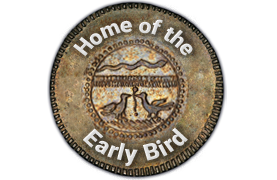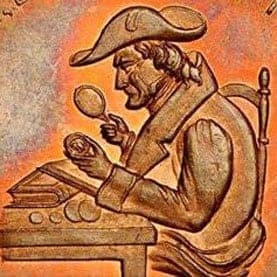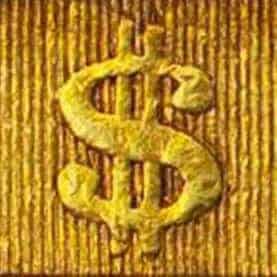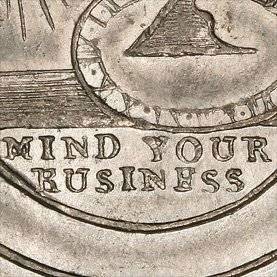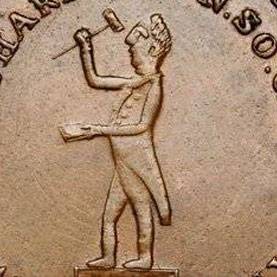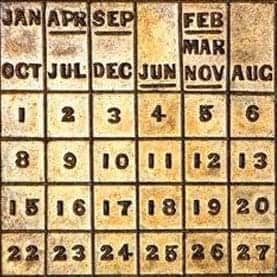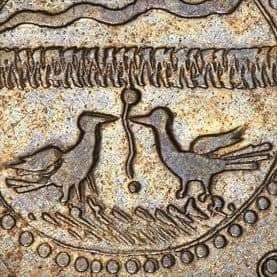July 14, 2008: What are Your Choices for the 100 Greatest US Coins?

That was the question posed to me recently by the good folks at Whitman Publishing.
It seems they are hard at work on the shiny new 3rd Edition of their extremely popular coffee table book, The 100 Greatest US Coins, and so they have asked me and a group of other (and I quote) "dealers, collectors, researchers, historians and others connected to the field" to vote on the list.
At the end of the process, the votes will be tallied and a new "100 Greatest" list will be determined by pure numismatic democracy, and then immediately placed on coffee tables across the country.
Oh, and one other thing – this is the guidance we were given:
"The greatest coins are not necessarily intended to be the most valuable U.S. coins or the most rare, but those that embody a combination of rarity, value, historical significance, and popularity."
So, with those ground rules, let’s get started.
Obviously, the first few choices are automatic, including the legendary rarities in the US series: The 1804 Dollar and 1913 Liberty Nickel are pieces which transcend rarity or value, and have achieved a sort of cult status in numismatics. Plus any coin which is the star of a mediocre TV show clearly must make this list.
A small step down from that lofty perch would come the 1894-S Dime, 1885 Trade Dollar, and, recently, the 1933 St. Gaudens Double Eagle. These are similarly transcendent coins in my mind, just not quite as much, but they clearly should make our list too.
But as you continue down the path of rarity, we quickly come upon coins which are certainly rare (heck, some – like the 1870-S $3 Gold Piece and the 1870-S Half Dime – are unique), but many aren’t household names, or popular, and some differ from their common brethren only by the addition of a small mintmark. Is this really the stuff of which "Greatness" is made? For the purposes of our list, I’m unconvinced.
Injecting my own bias into this (which is the point here, since I’m voting), I strongly favor a rare type over a rare date over a rare mintmark (unless the coin has other things going for it, like legendary status). Of course, value and popularity suggests otherwise.
Hmmm. Ths is hard. Lots of rarities here, but where to draw the line? I guess by including every rarity we can possibly think of, then culling the list later.
Now let’s change gears and move in an altogether different realm, into coins which are extremely popular, and relatively valuable, but frankly not rare at all compared to the big guys listed above. Things like the 1909-S VDB Lincoln 1c and 1916-D Dime. Are these "100 Greatest" material? They, and the other big name rarities like the 1893-S and 1895 Morgan have to be too. Again it looks like we’re going to have a long list of like items which can be whittled down at the end of the process.
In another direction, we have some of the incredibly popular classic pattern issues typically collected as part of the US series: the 1879 $4 Stella, the various Gobrecht Dollars, the 1792 Half Disme. Gotta’ list all those, right?
Then there are the extremely rare patterns that most folks have never seen let alone collected, but they do exist and could be on any list like this. Things like the 1849 $20, the unique 1877 Half Union $50s struck in gold, the double thick, Eagle-sized Double Eagles too. I’m not sure if these pass the historical significance or popularity test in the traditional sense, but I can’t see excluding them.
And then there are the "great" type coins, like the 1793 Half Cent, and Chain Cent, and Draped Bust, Small Eagle Half Dollar.
What about coins with stories, like the 1848 CAL Quarter Eagle?
And let’s not forget the early American issues. The 1776 Continental Dollar and the 1787 Fugio copper are an integral part of the story of US coins, bear designs by Benjamin Franklin, are incredibly popular and must make our list. But what of some of the less well known colonial patterns like the Confederatio Coppers based on a design sketched by Thomas Jefferson? It is inconceivable to me that something like that wouldn’t make this list (but I note that it hasn’t in the past). Perhaps no one knows that story? Well, I can try to tell it using my vote . . .
What about error coins? Can a mistake be a "Great"? I suppose the 1955 Double Die Cent can make that claim, as its popularity probably did as much to spur collecting interest at that time as any coin (or any thing), and so this truly is an important issue. But once we cross that line, are we obligated to include the 1943 Copper Cent? What about the 1944 Steel Cent? And the myriad other errors and overdates in the US series? Many are certainly popular, and many of awfully valuable, but are they "Great"?
Some might even suggest some of the mythical coins – things like the 1964 Peace Dollar – which may exist, but which no one (or at least no one with a camera) has ever seen. I guess that cannot be listed unless one turns up before the votes are cast (so that Whitman has one to plate in the book).
But even if we skip that last one, this list seems like it’s going to get a bit unwieldy, as I build up a list of well more than 100 coins and then look to pare it down.
And I haven’t even gotten to the hardest part: putting them in order from the Greatest to, er, the slightly less Great.
Personally, I feel famous rarities should rank highest, then rare type coins, then extremely rare but lesser known coins after that. Next I listed the rare & famous Redbook varieties. At the end of the list (but still included in the Top 100 Greatest US Coins, of course), I placed the well known, high demand key coins. I wont tell you my specific choices (you’ll have to buy the 3rd edition of the book when it comes out! But even then, my selections will be merged with those of all the other participants).
But that’s just me. What would your top ten Greatest US Coin selections be? How would you choose? How would you rank them? I’d really like to know.
Dave Wnuck

